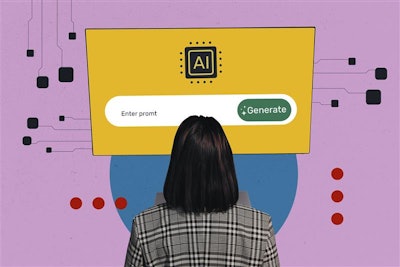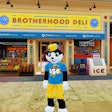
 Adam SloyerPhoto: Courtesy of Adam Sloyer
Adam SloyerPhoto: Courtesy of Adam Sloyer
There’s a familiar pattern we’ve seen in every major evolution of business: First it’s a novelty, then it’s a nice-to-have, and then it’s a necessity. That’s exactly where we are with AI in events.
Using AI to polish a few emails is a good start. But if you’re not applying it to more complex event tasks in your daily workflow, you’re leaving efficiency, accuracy, and money on the table.
This isn’t a think piece about the future. It’s a callout about the present. AI isn’t replacing planners anytime soon, but the planners using AI absolutely have an edge on the ones who aren’t.
Here are five practical ways to start using AI to boost your event productivity today...
1. Decoding contracts without running to legal
Master Service Agreements, venue contracts, talent riders—all are packed with extensive legal language that most of us would rather avoid until absolutely necessary. Instead of burning hours (or burning budget by calling outside counsel immediately), upload the document into ChatGPT and ask for a list of unfavorable terms. Want to get even sharper? Layer in a severity framework based on how hard-line you want to be ("flag all redline issues" vs. "minor concerns acceptable"). Then go a step further: Ask for suggested counter-language to negotiate back.Note: This doesn’t replace real counsel, but it’s a powerful bridge that makes you faster, sharper, and better prepared.
2. Turning lengthy RFPs into clear marching orders
If you’ve ever read an RFP and thought, "There’s got to be an easier way to sort through this," you were right. Upload the full RFP and prompt ChatGPT to do things like:- "Summarize the proposal requirements into a checklist."
- "Identify missing info and areas lacking clarity.”
- "Draft relevant follow-up questions to help clarify the scope."
The result is a faster start for your team, with more time spent on strategy and less wasted on information parsing.
3. Smarter reviews, sharper documents
You’re probably not using AI to write your show flows, sponsorship decks, or menu plans from scratch (yet). But using it as a powerful second set of eyes is a real game changer.Upload drafts of your materials and prompt AI to:
- Highlight areas where stage transition times may be too tight.
- Identify opportunities to enhance the value proposition around sponsorships.
- Evaluate menus for balance and cultural relevance.
It’s an incredibly effective tool to catch what you might miss, pressure-test your approach, and uncover new ways to strengthen the final product.
4. Sourcing smarter data to validate strategy
Need hard data to back up your event approach?Use tools like Perplexity.ai to instantly pull top statistics for a specific market, business line, or niche area you’re targeting. You can go broad ("top 10 trends in fintech events") or hyper-specific ("current average sponsorship spend for midsize SaaS conferences").
The best part? You’re not just getting numbers—you’re getting sourced numbers, so you can immediately trace back to credible outlets.
It’s a fast, powerful way to sharpen your strategic recommendations, strengthen proposals, and make more defensible decisions without spending hours combing through Google.
5. Elevating visuals without a production team
For the more advanced AI-ers out there: Image generators like DALL-E are getting better, but they’re still a work in progress. The real game changer right now? Runway.Runway is a platform that lets you easily create and edit images, videos, and media—no coding or editing skills required.
Working on a proposal and think a static image would be more dynamic as a short video? Need an animated mood board? Want a lightweight sizzle to bring a concept to life? With Runway, all you need is a prompt and some imagination.
Here’s a simple example: I took a static image from an AI Summit we produced last year and used Runway to instantly create a dynamic video version—no video editor, no studio time.
Original image:
 Photo: Ben Hider
Photo: Ben Hider
Video version:
(And the irony? Runway is backed by Lux Capital—one of Sequence’s clients.)
Pro tip: To unlock the full power of Runway, you’ll want a paid subscription. The cost is nominal compared to the value you’ll get back.
AI is one of the most powerful accelerators event producers have ever had access to. It’s a force multiplier, and the ones using it will move faster, work smarter, and deliver stronger results.
Start small. Pick one of the use cases above and start folding it into your workflow today.
Because the planners who lean into AI won’t just keep up. They’ll lead.



















